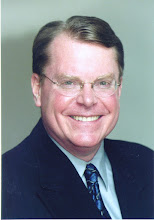A report by the Commonwealth Fund should serve as a reminder that "the uninsured" are not a single population, but instead a diverse group of individuals who, for many different reasons, share one thing in common: for some period of time, they lack health coverage. And when that happens, they're often on their own...not in the "rugged individualist" or "free rider" context often suggested by their critics, but because they're essentially frozen out of the market by current "pre-PPACA" industry practices.
More information on the complete study is available here:http://www.commonwealthfund.org/Publications/Issue-Briefs/2012/Apr/Gaps-in-Health-Insurance.aspx
Commonwealth's study of over 2,300 individuals found that twenty-six percent of Americans went without health insurance for some period of time in 2011. And for the most part,those without coverage lost it because they'd lost their jobs.
Seven out of ten of those who lost their employment-based coverage were uninsured for more than a year. There are a number of reasons.
Because the continuation of coverage provisions under COBRA are mandatory only for companies with more than 20 workers (and often COBRA administrative services aren't available to groups with fewer than 20 employees), one reason for the coverage gap is that a continuation of employer-sponsored coverage isn't available to them at any price.
And even for COBRA-eligible employees, the cost of continuing coverage under COBRA, at the employer's cost plus two percent, makes it too expensive for families whose earning power has already been undermined by a layoff.
The individual market is no solution in most states. Individual policies tend to cost more, and cover less, than do group plans. And because most states still permit insurers to deny applicants for individual coverage due to health concerns, forty-five percent of those who applied for non-group coverage couldn't find any at an affordable cost.
For those who have the money, but are shut out of the market due to health, high-risk insurance pools can be a partial solution. Some states, and the federal government, operate plans to provide subsidized coverage for those with pre-existing conditions which make them ineligible for commercial coverage. The Federal government recently reported that over 50,000 Americans had enrolled in its temporary Pre-Existing Conditions Insurance Plan (PCIP) in its first 18 months of operations.
Participants in the PCIP rang up some $1.45 billion in health costs, largely for big-ticket items such as cancer and COPD. The plan's participants' costs averaged nearly $29,000 per person, and required a direct federal subsidy of some $600 million to augment what they'd paid in in premiums.
Looked at in another way, given that the current average per-employee cost of health coverage is about $13,000 per year, each participant in the PCIP requires at least one premium-paying adult to utilize nothing in order to create a subsidy for one PCIP participant.
In an earlier article (http://polkiananalysis.blogspot.com/2012/02/one-percent-most-of-us-are-headed-for.html), I pointed out that it takes six people paying premiums and using zero coverage to subsidize the costs on each member of the country's one percent of highest utilizers of health services. And it takes three healthy Americans to subsidize the costs of the next highest four percent of utilizers.
In "the olden days," health care coverage was sold on a "community-rated" basis, with an explicit understanding that those who didn't use a lot of health coverage would be paying a little more for their coverage so that those who really needed it could pay a little less.
The market has "evolved" to a point at which sharp dealers in the insurance business have convinced us that the insurance market is an "everyone for himself" market, in which we should pay for what our own coverage costs, with no sense of responsibility for the "community" in which we live and work. And, of course, many insurers have made a tidy buck by finding ways to avoid covering individuals whose needs would require more of a subsidy than their own premiums could cover. This sort of "precision..." dividing up the underwriting world into universes of one...has neither moderated health premiums for everyone nor made coverage more accessible to those who need it.
Instead we've created "ghettos" in which these "high-risk" individuals either receive crappy coverage at high costs, or are forced to do without.
And we demonize "the uninsured" as freeloaders who take advantage of "us..." a classic gambit of "blame the victim."
But increasingly, the uninsured aren't "them." They're us...our neighbors, our family members, our friends...and their families.
I can't speak for the big thinkers, but Ive had the experience of being without work, and of being expected to find $1800 a month for health coverage which my insurer initially offered me for $600 a month, till they found out I had a little high blood pressure and asthma.
It was agonizing to go without, but the monthly premiums were the equivalent of a monthly mortgage payment. We prayed every day that we'd remain healthy, and that our kids wouldn't break a leg playing soccer.
I didn't feel like a freeloader. I was terrified for my family. We were very close to the edge, and a single significant health problem would have driven us into the 40% of Americans whose bankruptcy filings are due to health care expenses. But our insurer's position was, "It costs what it costs. Take it or leave it."
We were lucky to find a job with employer-sponsored benefits eight months later.
I'll never forget that terrible time. But for most of The Deep Thinkers, with their comfy jobs and generous health benefits, that'll probably never be a worry. That makes it easier for them to think of the uninsured as "them."
Maybe a year or two without health coverage for all members of Congress would remind them that they're one of us.
Tuesday, May 1, 2012
Subscribe to:
Posts (Atom)
